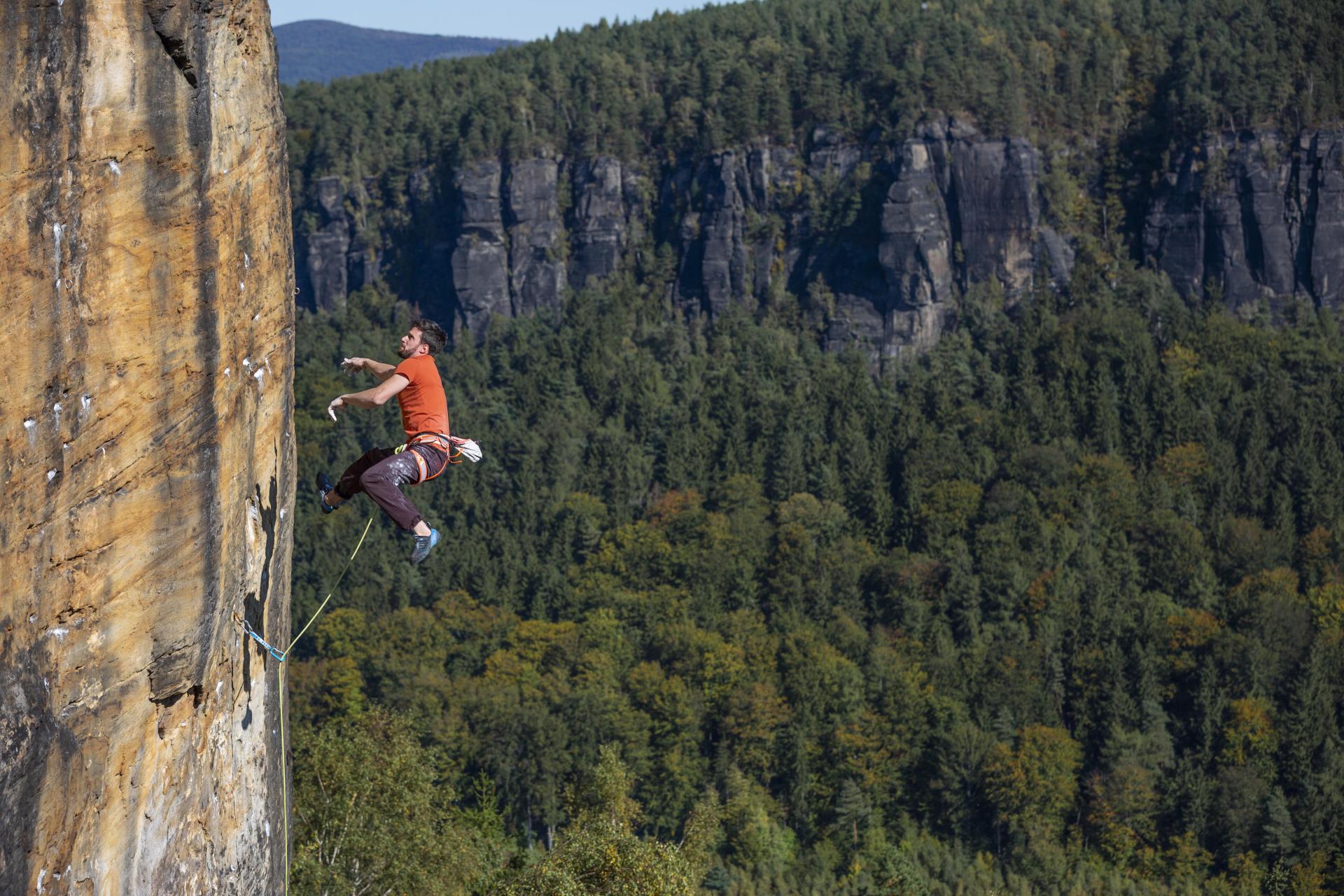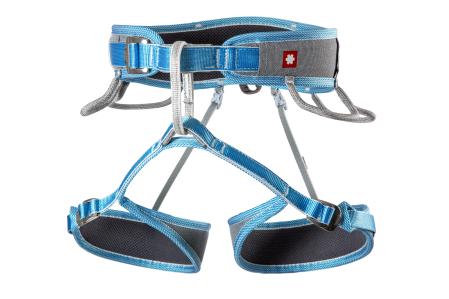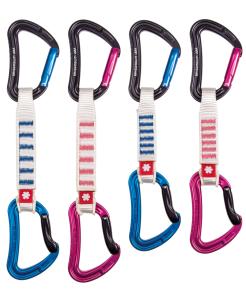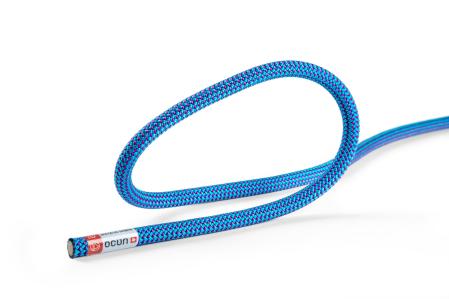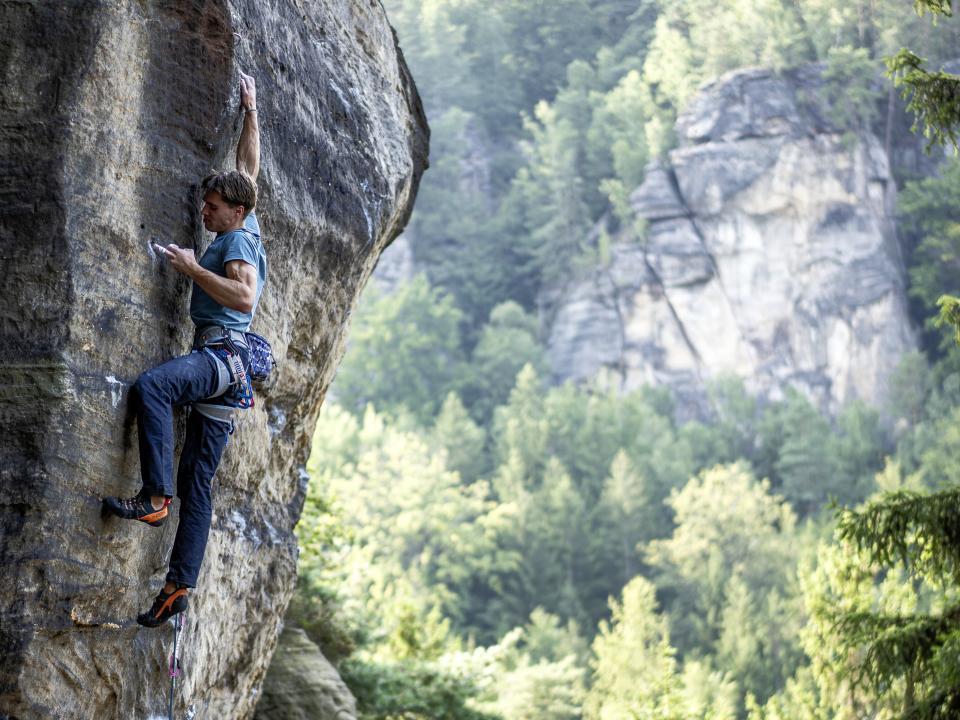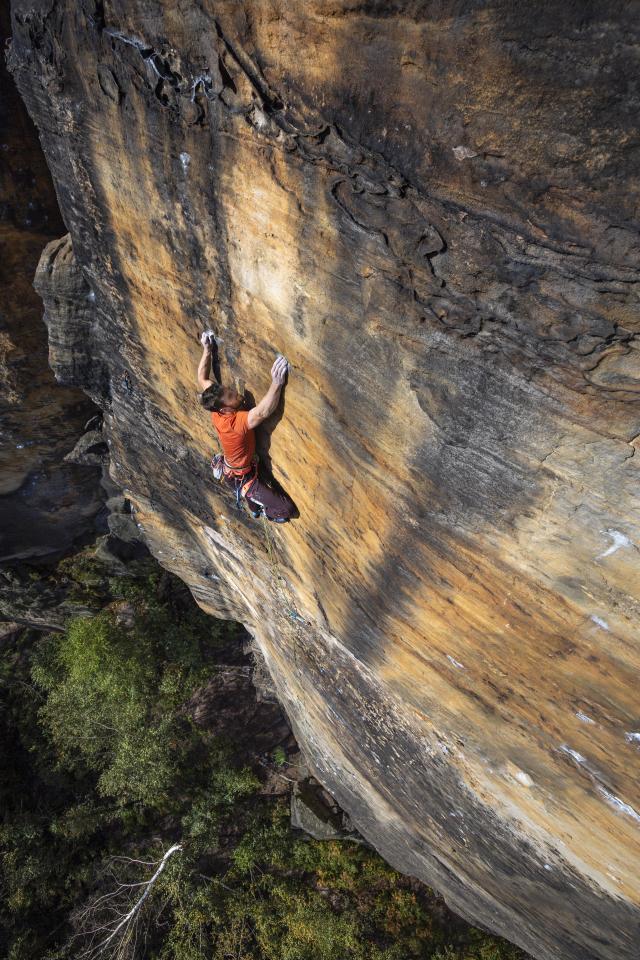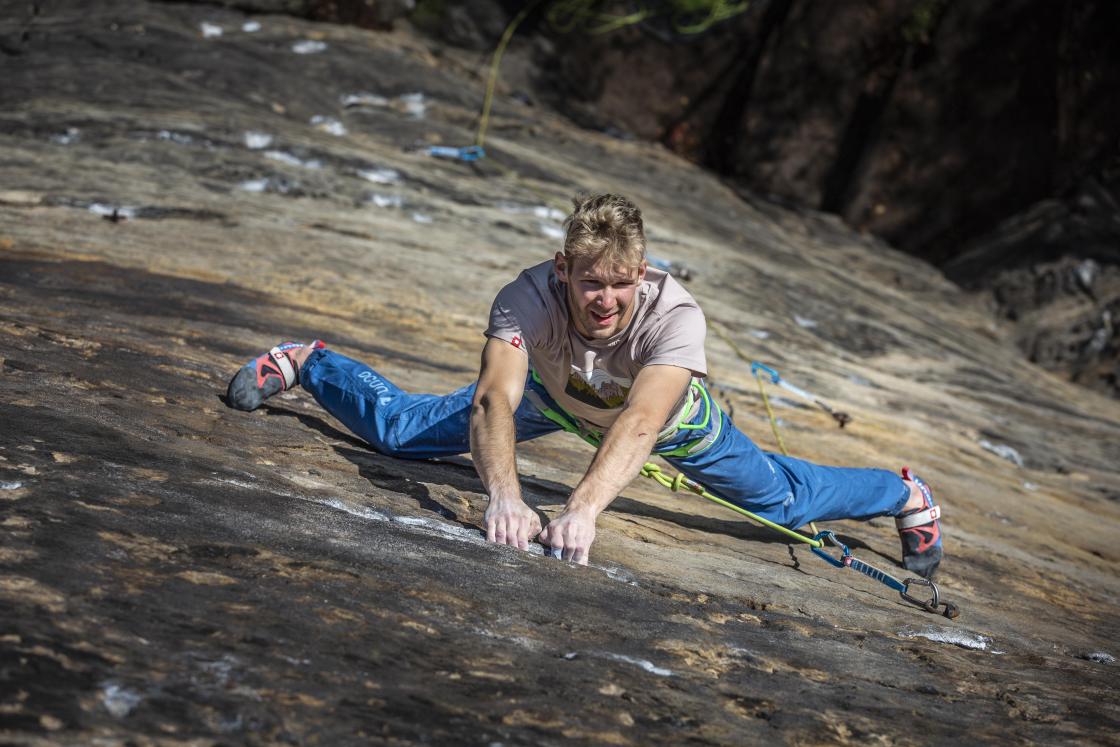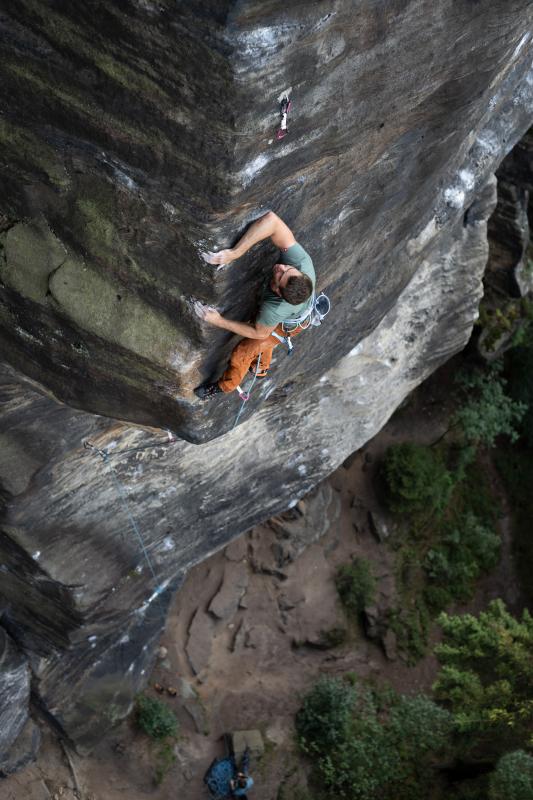The Elbe Valley known as “Labák” is a paradise for all passionate climbers and you will fall in love with the area, whether you are a traditional climber looking for challenges in the form of adventurous and very often bold and serious routes. As well as a modern climber who is motivated by conquering the toughest climbing problems and pushing your performance to the absolute physical limits.
Labák is the place where the history of Czech climbing was written. Place where the first climbing ascents were made and the tradition of Czech sandstone climbing began. A place where you can experience moments of quiet time. As well as moments full of stress and mental strain when climbing huge rock walls there! It is simply a place worth visiting, whether you have Labák “in your backyard” or you are far away from other European places…
Sniff with us the smell of sandstone rocks and majestic pine trees that stand on the Labák rock massifs. Feel the grains of sand on your climbing skin, wipe your sweaty hands in a “climbing diaper”, take a deep breath and head upwards for a vertical adventure in this unique world-class climbing destination…
To this article about the amazing Elbe Valley – “Labák”, as it is called among climbers in the Czech Republic, we are adding you a short-tell interview with Honza Vopat, who represents the “young blood” of the current climbing generation in the valley. You will read some basic information, take a look briefly into the history of the Elbe Valley, get some practical advice and tips or you will find out which projects is currently Honza working on.
We wish you a pleasant reading and look forward to seeing you in Labák or anywhere else on our beautiful “Czech sandstones”. Have a gorgeous autumn full of perfect friction, dry rocks and warm sun rays of the slowly retreating sun.
"Place where the first climbing ascents were made and the tradition of Czech sandstone climbing was born..."
Location and place
Labák is located in North Bohemia, between the town Děčín and Hřensko, in the protected landscape area Labské pískovce and the Natural Park Czech Switzerland. This beautiful canyon is flanked by high rock massifs reaching up to 80 metres in height. The valley is divided by the river Elbe into its two banks – right and left. It forms a ten-kilometre-long and very high-quality sandstone rock cliff.
On the right bank, you will find a slightly larger number of rock formations, which corresponds to a higher number of climbing routes – approximately 3,000 lines. The left bank is slightly “humble” in size and count of routes (about 2,000 lines). Yeah, the Elbe Valley indeed offers more than 5,000 climbing routes.
The connection between the two banks is formed by the Tyršův most in Děčín and the ferry in Dolní Žleb, where you can cross from one part to the other with a ferryman. The city of Děčín may be reached by any means of public transport, either by bus or train. You can also drive by car directly to one of the parking lots, which are the starting points for the entrances to the climbing sectors. Due to the size of the valley, we recommend buying climbing guidebooks, where you can find GPS coordinates for all the basic spots.
However, these following villages (ordered from north to south) can be a closer guide for you: Hřensko, Labská stráň, Arnoltice, Bynovec, Podskalí and Ludvíkovice – for accessing the rocks on the right bank. To access climbing sectors on the left bank, you can start with these places: Dolní Žleb, Maxičky, Čertova voda and Prostřední žleb.
The railway also runs along the entire Elbe Valley, so you can comfortably get there by train and experience a bit of the adventure of the infamous “Czech Railways”. The bus stops can be found in many of mentioned villages and it just depends on which area you're heading to...
"The Elbe Valley offers you more than 5,000 climbing lines on the rock massifs up to 80 metres high."
Brief climbing history in Elbe Valley
Don't expect any thorough historical description of the whole area, but rather just a really short introduction to give you a glimpse of the history of climbing in the Elbe Valley. Some important information, historical milestones and interesting facts and then more practical advice for all of you who would like to visit this beautiful place at least once in your lifetime…
History of the Right Bank
Very first climbing ascents of Elbe peaks occurred in the first decade of the 20th century by Saxon climbers from nearby Germany. The Klárka (Klarturm) was climbed firstly in 1904, followed by the Mnich (Mönch) and the Horní Jeskynní věž (Oberer Höhlenturm) in 1907 and a few years later the Růžová palice (Rosenkeule) in 1909.
With acting of the Saxon climbers everything in Labák started. The names like E. Klar, R. Pötzsch and E. Munzke has been written in history of this Valley.
The next wave of Saxon climber conquest was in 1910, when they ascended Vojtěch (Wotanskegel), Krkavec (Rabe), Hřebenový kužel (Kammkegel), Strážce Dolního Žlebu (Niedergrundwächter), Viklan (Wackelstein), Růžová věž (Rosenturm), Dolní Jeskynní věž (Unterer Höhlenturm) and also Děčínská věž (Steinbruchwand).
Czech climbers began to compete with these Saxon first ascentionist after the Second World War (i.e. from the 1950s). They started repeating the earlier Saxon ascents and gradually discovered their new directions and conquered other yet untouched peaks.
A significant shift in climbing difficulty occurred at the turn of the 1960s and 1970s, especially by the Weingartl brothers and later by Jindřich “Hudy” Hudeček. They created mentally demanding, technically and strength difficult routes with very strict rules for first ascents (e.g. drilling rings only from a “clean” climbing position)!
In the 1980s and 1990s, climbing also started moving towards more sport-oriented ascents, which formed a contrast to the demanding ascents of the previous decades.
"The first climbing ascents were made by Saxon and Czech climbers, who competed against each other in the valley. These routes were very challenging and mentally demanding."
History of the Left Bank
The beginnings of climbing on the left bank also dates back to the first decades of the 20th century and again: it is linked to German climbers from Saxon. The first climbed peak in 1906 was the Jeptiška (Nonne), which is one of the most dominant towers of the left bank and also the second ascent tower in the whole Elbe Valley. It was climbed by the Saxon climber W. Baudisch and his companions.
Other climbed rock peaks were Strážce Čirty (Tschirtenwächter) and Čirtská jehla (Tschirtennadel) in 1908 and later the Žlebská jehla (Niedergrundnadel) in year 1909.
Czech climbers started to climb on the left bank also after the Second World War and the first ascents here are associated with names such as: K. Krombholz, Wiegel brothers, J. Bílek, R. Zabilka, J. Houser and others.
Later climbing generations include the names such as Weingartl brothers, K. Bělina, J. Hudeček, P. Laštovička, R. Litochleb, J. Koudelka, P. Bechyně, P. Henke, S. Lukavský and well-known, renowned authors: J. Slavík, P. Slanina, T. Sobotka and O. Beneš.
If you want to get to know the diverse climbing history of the Elbe Valley in more details, we recommend you a book by J. Hozák: Ó, Horo(Oh, Mountain), published in 2009.
Now, let's get to all that promised advice and practical information that I'm sure you're eagerly craving, dear and impatient climber. :)
Type and style of climbing
Approaches related to the climbing style in Labák always differed according to the period and climbers who were active there at the time. Thanks to this, today the Elbe Valley has become a relatively liberal sandstone area where traditional adventurous climbs exist side by side with modern, more sport type of routes.
On the right bank you will find more traditional routes, whereas the left bank is considered the more “sporty” one. But do not expect a secured sport limestone climbing like somewhere in Frankenjura or Arco. Still there are longer “run-outs” between the bolts, where distances around five metres are absolutely standard there. Both sides of the canyon offer extremely high quality sandstone of harder structure, which is a popular area for Czech climbers and foreign ones too.
The left bank offers an east-orientation due to the position of the most of valley walls and main massifs. Some side massifs are oriented to the south, southeast and north. The prevailing height of walls is between 20 and 35 metres, and in some places you can find routes with lengths between 40-50 metres. The dominant feature of the left bank is the “Ostroh Východního rohu“ with routes reaching up to an impressive 60 metres in height. On the left bank, you can climb even in warmer weather, as the rocks are more hidden under the trees compared to the right side.
Climbing on the left bank provides a higher concentration of modern routes with a sportier nature, compared to the more traditional routes on the right bank. You'll also find many really hard routes, including one of the hardest ”To tu ještě nebylo” RP XIIb (This hasn't been here yet, French 9a), which is a 16 meters route by Adam Ondra, Ondra Beneš and M. Tomášek from the year 2011.
The dominant part of the canyon is the right bank, where the walls reach a staggering height up to 80 meters! Most of the valley walls on this bank are oriented to the west, and therefore “climbing on the right” is more suitable during spring and autumn. On the right bank, you will find the real classics and routes where the history of Czech sandstone climbing was written. Long and bold ascents where you will have to show your mental balance and stability and not let yourself be thrown off by long distances between protections in often not-so-well-protected climbing terrain.
“The Elbe Valley is a beautiful sandstone area where traditional adventurous routes exist side by side with the modern more sporty lines…”
The tradition of sandstone climbing in the Czech Republic has always been and still is to create new routes in a “bottom-up” way, which means that the climber starts the ascent from the base of the rock and has no knowledge of what awaits him in the line. He does not look forward from the top or practice with the top-rope belay. He simply starts the climb and gradually cuts off climbing meters and overcomes the problems that wait on him on the way up. You can probably imagine the dose of courage and the portion of adventure that all first ascentionist and route authors experienced at that time. Well, thanks to these courageous climbers, we – the ordinary climbing “mortals” may enjoy climbing on these beautiful massifs or to the tops of some towers.
Sandstone routes classification
In the Elbe Valley you will encounter the sandstone classification scale, which has been profiled as noticeably harder since the 1950s, compared to climbing in nearby Saxony (also because of competition with Saxon climbers).
Of course, not all the routes correspond to this trend, but overall the difficulty of local routes is generally harder, compared to other Czech sandstone areas such as Suché skály “Sušky”, Panteon “Panťák” or almost neighbouring Tisá.
The difficulty and classification of individual routes vary considerably even within a single climbing grade. You may even find differences of up to three grades in one climbing grade, especially for older or not-so-often climbed routes.
For better orientation, it is better to use the authorship of the routes (name of the author) to the time when the route was created. The best way is to talk to a “local climber” who can advise and recommend you the suitable climbs for your capacity, skills and performance.
Beware that the classification does not count your individual mental toughness, experiences with the local terrain or even the ability to “belay yourself well with textile knots”.
In all of the routes, as everywhere else in the Czech sandstone rock climbing areas, it is strictly forbidden to use metal gear for securing the routes like wedges, hexes or friends. So you can protect yourself only with textile material in the form of variously wide and shaped loops of rope – knots. The “art of climbing with knots”, various monkey fists, securing with slings on rock spikes, all of this must be an indispensable technical skill for every sandstone climber who wants to climb well and, above all, safely in this beautiful valley.
“In Labák it is forbidden to use metal gear for securing the routes and you can only use textile loops in the form of various knots..."
Gear and practical tips
So what all bring with you? Definitely a long and durable rope.The local massifs can reach heights up to 80 metres and many times you will use the whole length of the climbing rope. So be sure to watch the ends, tie “stopper-knots” and keep an eye on your climbing partner! You will often rappel on two parts from the climbed routes because of the height of these walls.
A rope mat can also come in handy, as you'll find plenty of “sand on sand” down under the rocks, so you'd better take care of your rope, protect it and keep it in shape so it lasts as long as possible.
Aside from rope, slings and knots to the cracks will also come in handy. Take something from everyone: different sizes and types of fabric loops depending on what routes you want to try. You'll use either a pair of crack gloves or climbing tape (depending on your preference). However, the truth is that in the more “sporty” (and especially harder) routes on the left bank, you can sometimes get by only with a large number of quickdraws.
Another great tip is the “baby diaper”, which is great for wiping your sweaty hands, because in Labák the use of chalk is forbidden (respectively it is tolerated from a certain higher difficulty grade). A cotton diaper wrapped around your climbing harness is a great solution and a local trick to dry out your hands pretty well.
And then the rest: climbing harness, sewn loops for extending the belay (rather longer ones – 120 cm long), so you can lead the rope “through the air” in a straight line and not destroy the rock or worry about pulling you down by the heavy weight of the coiled rope. And in the end a few locking carabiners and climbing shoes according to your preference. Often a very soft shoes for slab climbing or as the opposite: stiffer ones with a harder sole rubber for small crimps and foot holds. You can try out our new OCÚN OZONE climbing shoes, in which you can stand even the smallest footholds here in Labák.
“A cotton baby diaper wrapped around your climbing harness is the perfect solution and a local trick to dry your sweaty hands pretty well..."
You can add a bouldering crash pad to your gear, which can serve greatly as your helper and lifesaver if you are in danger of falling to the ground. In addition, it takes only 30 minutes by a car to drive to the nearby bouldering area – Děčínský Sněžník. So if you're already completely saturated with a rope climbing, try visiting this beautiful landscape and world-class bouldering destination, where more than 1,800 boulder problems waits for you. Do not forget the climbing guidebook, because you will definitely need it. Dozens of massifs, hundreds of sectors and thousands of climbing routes!
A great choice is the recently new two-part guidebook of the Elbe Valley from the authors: Jiří Chocholoušek and Vladislav Nehasil, divided into two separate books: The Elbe Valley – Right Bank and The Elbe Valley – Left Bank.
Alternatively, you may try the German guidebook Kletterführer Elbtal, which combines these two banks together in one book and it was written by authors: Gerald Krug and Jörg Andreas.
Season – when to go?
The best time for climbing in Labák is spring + autumn and you can climb mostly from the second half of April until the end of October. However, you can also enjoy climbing in the summer months, if you choose the right orientation of climbing sectors, so you don't “baked yourself” on the sun. The most suitable conditions are in autumn, when the valley has cooler climbing conditions.
For bouldering in Sněžník, almost any season of the year is possible. But in winter months, expect very low temperatures, often under the zero degrees of Celsius.
Do not forget to keep an eye on climbing conditions and seasonal closures and always check the current situation in crags. Climbing on sandstone rocks is subject to a very strict rules and one of them is prohibition on climbing on wet rock, so you must always wait until the rock is dry enough!Often it may seem that soon after the rain the rocks are dry, but sandstone holds a lot of water inside, below the surface, so it can still be wet for a long time, making it a completely fragile material, prone to break off at any moment, which is not good neither for you nor the rock.
"Sandstone rocks hold a lot of water under the surface and can remain wet for a very long time, making it a fragile material prone to easy break off..."
Accommodation, services
If you want to experience the right climbing atmosphere, you must visit the most famous climbing pub U Kosti in Dolní Žleb. The place where all climbers meet once the last sun rays went out. The pub gets packed with hungry and thirsty climbers in every evening in the peak season.
You can taste great food and Czech beer with a really reasonable prices. On top of that, they offer a climbing refugio directly above the pub where you can sleep in your sleeping bag for a few euros. They even have a small kitchen and a hot shower, so you can head out the next day freshly rested to the rocks, which are only less than 200 metres away as the crow flies.
You can also trycampsite Děčín or sleep somewhere under the rocks “in a bivouac” and in the nearby forests “wild camping”. However, be careful and do not disturb anyone with your stay and behaviour and also “leave no trace” after your visit. But this should be clear to every climber and lover of mountains and nature, hope so.
The other famous Czech climbing pubs are a bit far away, but if you would like to discover these legendary places, meet a local climbers, learn more about the history or get recommendations on climbing routes, then definitely don't hesitate to visit these beautiful sandstone areas.
“If you want to experience the right Czech atmosphere, you must visit the most famous climbing pub – U Kosti!”
Come to a smaller massifs and walls in Tisá, where you will find great places serving as “social-cultural-climbing-storytelling” refugios: Refugio Tisá or Restaurant Kačák.
Just over the hill, in nearby Ostrov (Eiland), you'll find beautiful small rock towers and also a climbing pub, along with accommodation and campsite called Autokemp pod Císařem. You will feel the calm of the rocks there (because of the absence of telephone signal) and in the evening you will balance the scales with wild climbing parties!
If you want to learn more about these legendary places, check out the eMontana website. There you can read a great series of articles on the topic – Climbing pubs in Czech Republic.
So now we finally pass the word and you can enjoy the interview with Honza Vopat, who is also OCÚN ambassador and almost a climber, here in “Labák”. So read this short-tell interview, hear his impressions and overall view on the Elbe Valley, let him recommend you some practical tips or just find out a little about Honza's (climbing) life...
BASIC AREA INFO
Area (region): České Švýcarsko – Labské pískovce – Labské údolí – Pravý břeh + Levý břeh
Material, type of rock: sandstone (of rather harder structure)
Climbing style: classic traditional routes + modern (sportier) bolted routes
Route difficulties: V to XIIb – sandstone “the Elbe Valley” classification (Sachsen) (4b to 8b French classification)
Route length: 10 to 80 metres
Best climbing season: spring + autumn
Climbing guidebooks: The Elbe Valley – Right Bank (J. Chocholoušek, V. Nehasil), The Elbe Valley – Left Bank (V. Nehasil, J. Chocholoušek), Kletterführer Elbtal (G. Krug, J. Andreas)
Climbing pub: Dolní Žleb – U Kosti
